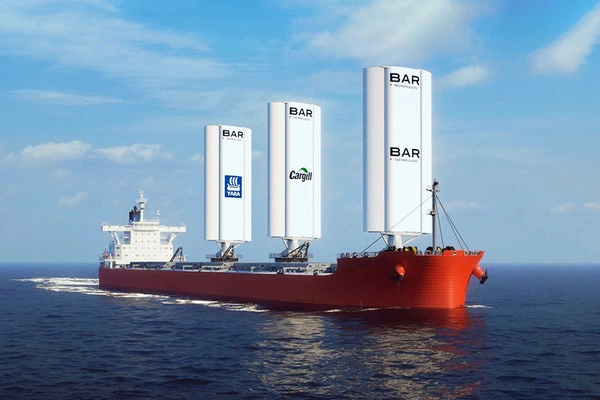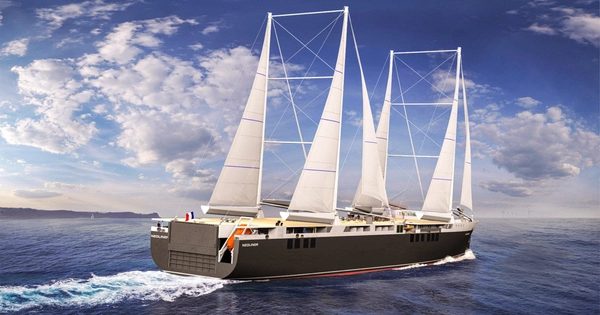Modern sails, also known as wind-assisted propulsion systems or auxiliary wind propulsion, involve the incorporation of advanced sail technologies into ships in order to harness wind power in addition to traditional engines. The shipping industry contributes significantly to global carbon emissions, and reducing its environmental impact has become a pressing issue. Researchers have devised a strategy to counteract the random and unpredictable nature of weather conditions, which threaten carbon emission reduction efforts in the shipping industry.
Ship owners installing modern sails to reduce carbon emissions are concerned about erratic weather. However, new research from The University of Manchester identifies operational strategies that can reduce shipping emissions by up to a quarter, reinforcing faith in sails as a decarbonization tool.
The international shipping sector is estimated to contribute 2-3% of global carbon emissions annually, and its target of cutting carbon by 50% relative to 2008 levels by 2050 falls short of the cuts required by the Paris Climate Agreement, implying that the shipping sector requires immediate global action.
This research provides insight into which routes are most sensitive to changing weather forecasts when using wind propulsion and assesses a strategy that could help to mitigate the detrimental impact that unpredictable weather conditions can have.
Dr Alejandro Gallego Schmid
The study, which was published in the journal Ocean Engineering, calculated carbon emissions from over 1000 ship departures from three major shipping routes. The findings revealed that combining modern sail technology with efficient routing systems could provide greater assurances of carbon savings by employing a technique that reduces uncertainty caused by unpredictable weather patterns.
Dr. James Mason, a former postdoctoral researcher and now a visiting academic at The University of Manchester’s Tyndall Centre for Climate Change Research, stated, “Current measures to reduce carbon emissions include retrofitting technologies, such as wind propulsion technology, where modern sails produce direct energy from the wind to reduce the power consumed by a ship’s engine. Weather routing is also used as an efficient routing system to allow a ship to deviate from standard shipping routes in order to find new routes with better winds.”

“Current academic methods assume perfect foresight of future weather rather than accounting for unpredictable winds that occur in real-time.” This can reduce the carbon savings from weather routing and present a real challenge for the shipping industry in meeting its climate reduction goals.”
Dr. Alejandro Gallego Schmid, Senior Lecturer at the Tyndall Centre for Climate Change Research, added, “This research provides insight into which routes are most sensitive to changing weather forecasts when using wind propulsion and assesses a strategy that could help to mitigate the detrimental impact that unpredictable weather conditions can have.”
The strategy mirrors existing routing methods in the sector by updating weather and wind every 12 hours to allow ships to adjust their routes based on the most accurate weather forecast available. To test the strategy, the study simulated 1080 ship departures across eastbound and westbound journeys in the North Sea, South Atlantic Ocean and North Atlantic Ocean, which have voyage times of up to 12 days.
The study discovered that the method successfully reduced the uncertainty caused by unpredictable weather, and that sails and efficient routing can result in annual carbon savings of up to 25%. However, while the method reduces the uncertainty caused by unpredictable weather, it does not completely eliminate it. In ideal conditions, wind propulsion and efficient routing can provide maximum carbon savings of up to 29%, but weather uncertainty reduces these savings by 10-20%. More research is needed to understand how ships can save the most money in practice.
Reducing shipping emissions by up to a quarter through the use of wind propulsion and efficient routing could provide significant benefits to the industry. The study provides a better understanding of the potential carbon savings achievable through wind propulsion decarbonisation strategies, without which the Paris Climate Agreement’s goals may become a distant memory.





